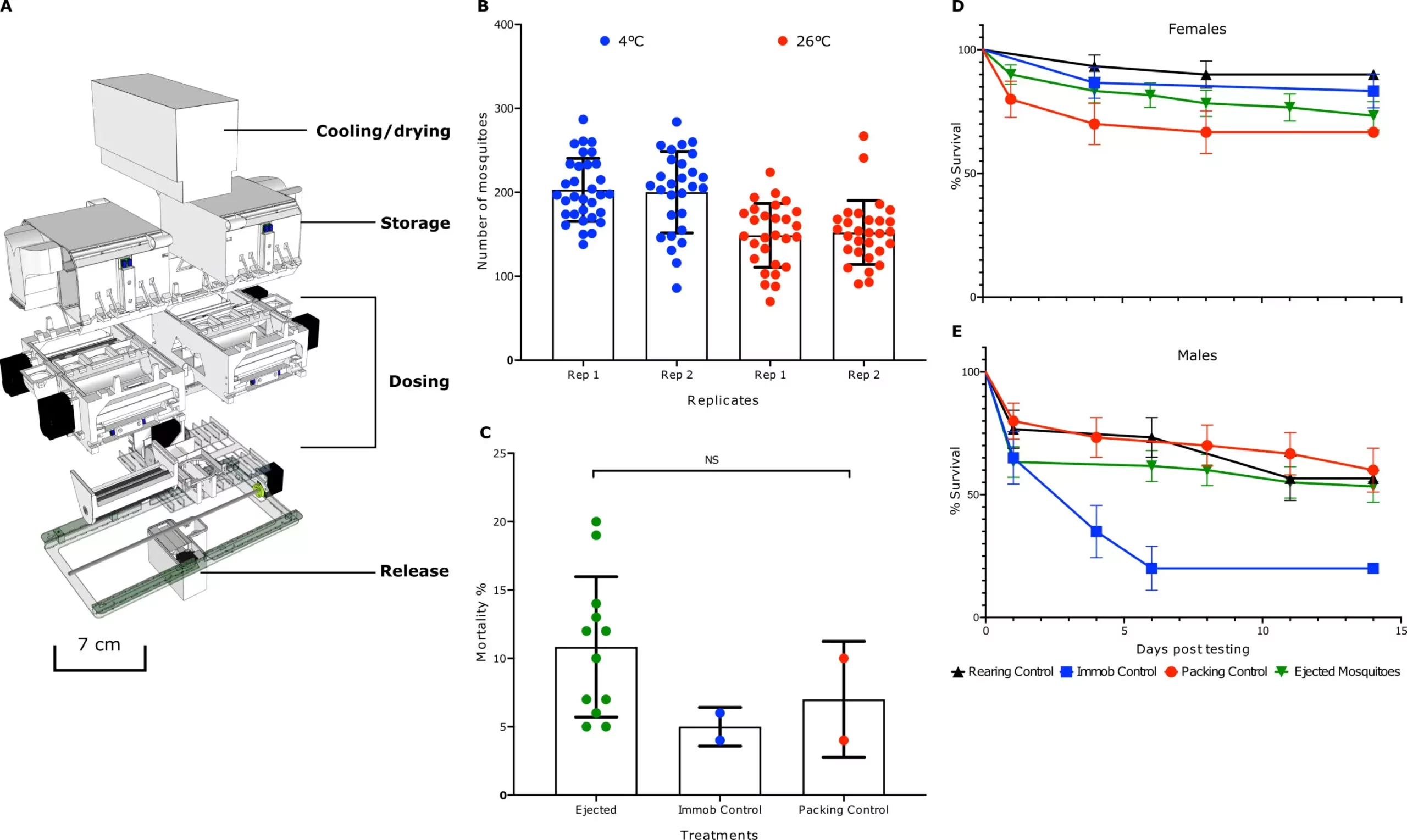In the fight against infectious diseases, few challenges loom as large as those posed by mosquitoes. Known carriers of debilitating viruses like dengue and Zika, these insects are not merely nuisances; they threaten public health and economic stability around the globe. As scientists and health officials grapple with the urgent need to control mosquito populations, innovative strategies are being explored to combat this persistent problem. One such approach makes use of cutting-edge drone technology, merging biology with automation in a compelling bid to reduce mosquito-borne illnesses.
From Traditional Methods to Technological Advances
Historically, the most common technique to control mosquito populations involved the labor-intensive process of breeding infected mosquitoes and then releasing them manually into the environment. This method, while foundational in understanding mosquito biology, has proven to be riddled with inefficiencies. The risks inherent in manual release, including the potential for human error and the difficulty in achieving a controlled distribution, have prompted researchers to seek alternatives. Recent advancements, however, are starting to reshape how mosquito control can be implemented, particularly through the use of drones designed for this specific purpose.
A collaborative effort led by the World Mosquito Program, alongside partners like WeRobotics, has yielded a remarkable breakthrough. This team has engineered a specialized drone that carries a meticulously designed container, capable of holding up to 160,000 mosquitoes in highly organized compartments. Each compartment has a release mechanism that enables precise dispersal of infected mosquitoes over broad areas. This innovation transforms the way we think about vector control, moving from labor-driven strategies to automated, systematic approaches that promise not just efficiency, but effectiveness.
Efficiency Meets Efficacy
The new drone-mounted system embodies both ingenuity and practicality. The small, lightweight design ensures that the drone can navigate various terrains and environments, releasing approximately 150 infected mosquitoes at a time. The targeted, on-demand release capability allows for a strategic distribution that manual methods simply cannot match. By conducting field trials in Fiji, researchers verified the viability of their approach, noting a significant improvement in mosquito distribution compared to traditional methods.
Moreover, the drone’s features extend beyond simple transport and release. Climate control mechanisms ensure that the mosquitoes remain viable during transit, while sedation techniques keep them calm until the moment of release. This level of thoughtful engineering is necessary to maximize the effectiveness of the intervention, providing a viable path to not just addressing existing mosquito populations, but fundamentally altering their dynamics in treated areas.
The Implications for Public Health
The ramifications of this technological advancement reach far beyond the laboratory. By effectively applying automated drone technology in the context of public health, there lies an opportunity to significantly reduce the prevalence of mosquito-borne diseases. With the ability to deploy infected mosquitoes at scale, communities at risk can experience a tangible decrease in disease transmission. This approach not only stands to benefit immediate public health concerns but also serves as a model for how technology can be harnessed to solve complex biological problems.
As mosquito populations face pressures from innovative control methods, it is essential to evaluate the long-term impacts on both ecological systems and human health. Each deployment of the drone carries implications not merely for insect numbers but also for the delicate balance of local ecosystems. Responsible deployment, guided by rigorous scientific understanding, will be crucial in ensuring that advancements in technology translate into sustainable solutions rather than new ecological dilemmas.
A Call for Continued Innovation
The intersection of mosquito biology and technology exemplifies the power of interdisciplinary collaboration in addressing public health challenges. The work of the World Mosquito Program and its partners underscores a vital paradigm shift from traditional methods to innovative solutions rooted in automation. This evolution invites further exploration of how emerging technologies can complement and enhance conventional techniques in the ongoing battle against infectious diseases.
The utilization of drones for mosquito control is more than a scientific novelty; it’s a pioneering journey toward transformative public health interventions. With continued investment in such research, society can harness the power of technology to not just imagine but realize a world where mosquito-borne diseases are significantly curtailed, ushering in healthier futures for countless individuals globally.

